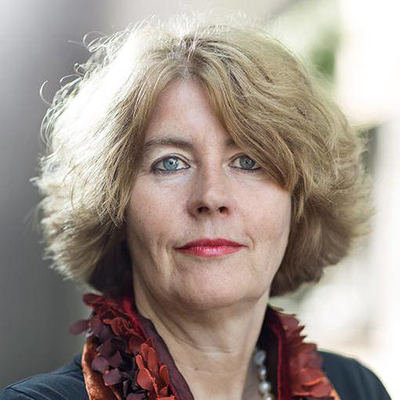The steady process of unchurching in the Netherlands implies that images that were once used in a Christian frame – and placed either at home or in a church – are relocated in non-religious settings where they are exposed to a broad public. As matter out of place, they trigger the imagination and evoke a broad range of responses. Such relocated images are “religious matters in an entangled world” par excellence, the study of which can reveal repercussions of Christian motifs in secular settings, including art. This theme comes back regularly on our site, for instance with regard to reliefs of Mary made from toilet paper or once sacred images for sale in second hand shops.
Jan Tregot is a Dutch artist who carefully works through the tangible remains of a once lived Christian devotional practice. I was alerted to his work when, in 2019, I visited the museum Ons’ Lieve Heer op Solder (Amsterdam) which formed one of the Art Stations of the Cross and saw his work De laatste dagen (The Last days, 2016/17), which I addressed in my article Recycling The Christian Past. In August 2022, I visited him, together Gert Naberman1, in his atelier and exhibition space in Nijmegen. Recently he received me in Gallerie LangeHezel46, Nijmegen, which showcases the exhibition Mijn vlakke land, with images by him and paintings by Harrie Gerritz (16 October-19 November 2023).
Raised in a Protestant milieu in Zeeland, Tregot is familiar with Christian iconography and symbolism. Neither atheist nor Christian, he looks at the materials he uses for his artworks from a distance. Images of Jesus or Mary do not have a religious meaning for him but carry a cultural load that he seeks to unpack and rework. He sees himself as a cultural analyst who develops a new imagination from old materials. In a written interview conducted with him by Gert Naberman, Tregot explains: “I never had religious feelings regarding a crucifix, I see an execution scene. In my work the Christ-figure functions as a symbol for a Christian culture, not as a ‘religious’ object.” The work Ik heb geen identiteit (I have no identity, 2019/20), showing a Jesus figure jumping rope with a flagellum, reveals surprise about the way in which entertainment has enveloped Christian symbolism, so much so that the death on the cross is normalized and neglected. Strijder (Warrior, 2017/18) reverses the image of Jesus as victim, turning his right hand into a sword and putting nails that point outward all over his body.
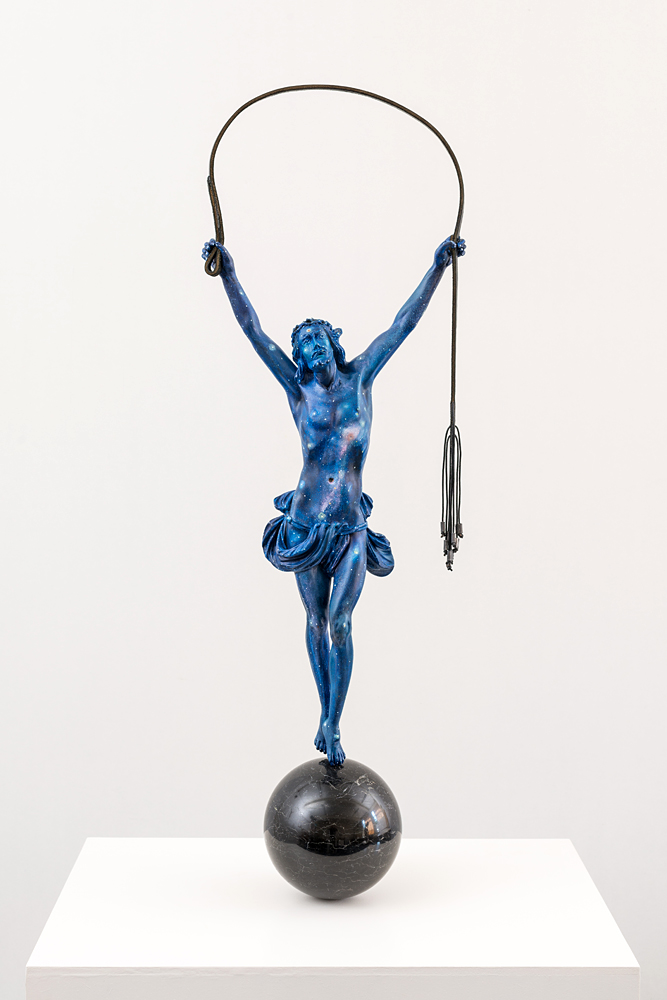
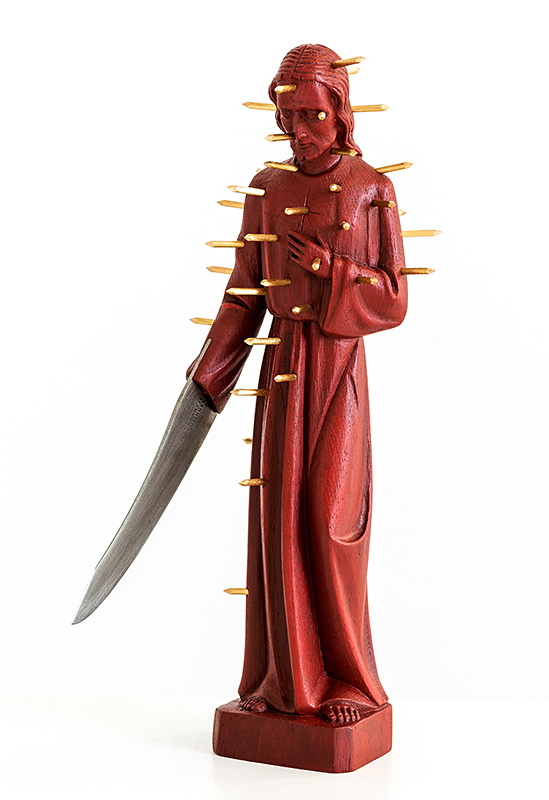
In Tregot’s view, Christianity is on the wane and present in society as cultural heritage. Its discarded tangible materials are fascinating and evocative to work with. He creates new images out of old ones, by making cuts, re-arranging and combining parts, adding new elements, repainting. His Madonna in een kerk (Madonna in a Church, 2022), built with a Marian image designed by Salvatore Melani (1902-1934) and inspired by Jan van Eyck’s 15th century painting The Madonna in the Church, is so tall that she does not fit into, yet has her head covered by the church building. Tregot places himself in a long chain of artists having created images of the Madonna, offering his own view of her in our secularized times.
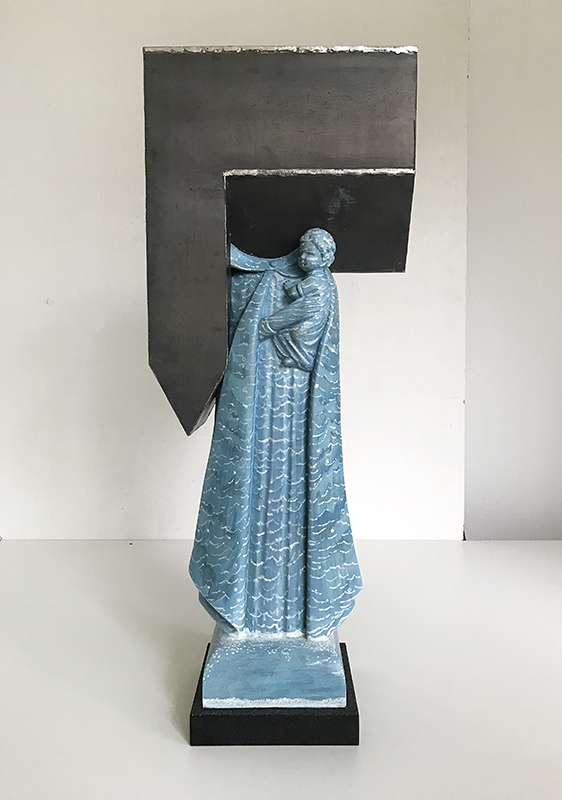
Tregot told me that he experiences different responses to his artworks. Believers may feel offended and angry, whereas others may be intrigued by seeing Christian images from a new angle, perhaps becoming aware of the violence at the core of Christian iconography. Others, especially young people, are not aware that the images have a link with Christianity. What fascinates me about his works is that they relocate familiar Christian iconography in a new frame in which the old image is still present and more or less recognizable. This move of Christian imagery produces an alienating effect that triggers mixed thoughts and feelings. His artworks provoke viewers to question conventional views and to raise fundamental questions about life and death, war and destruction, that believers have struggled to address over the centuries and that live on even after “the death of God” proclaimed by Nietzsche, and echoed by Tregot. With crucifixes becoming waste, paradise is closed, albeit still longed for (Gesloten Paradijs, 2020).
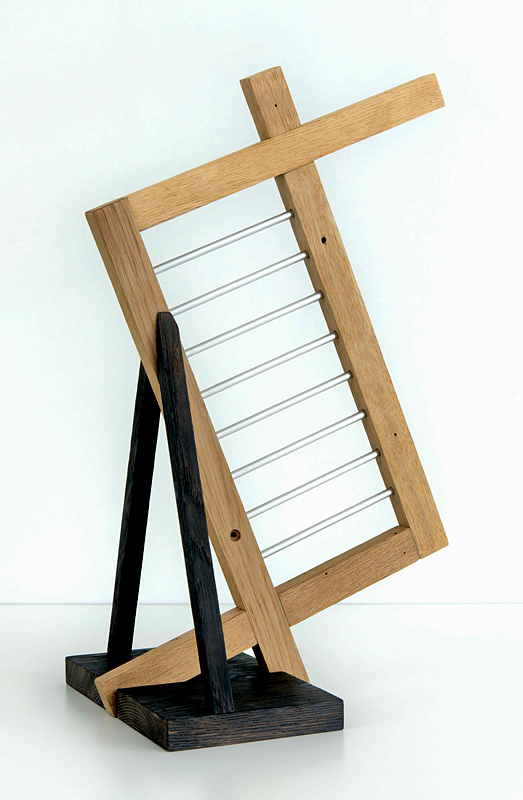
1 Gert Naberman is a research master student Religious Studies at UU.

